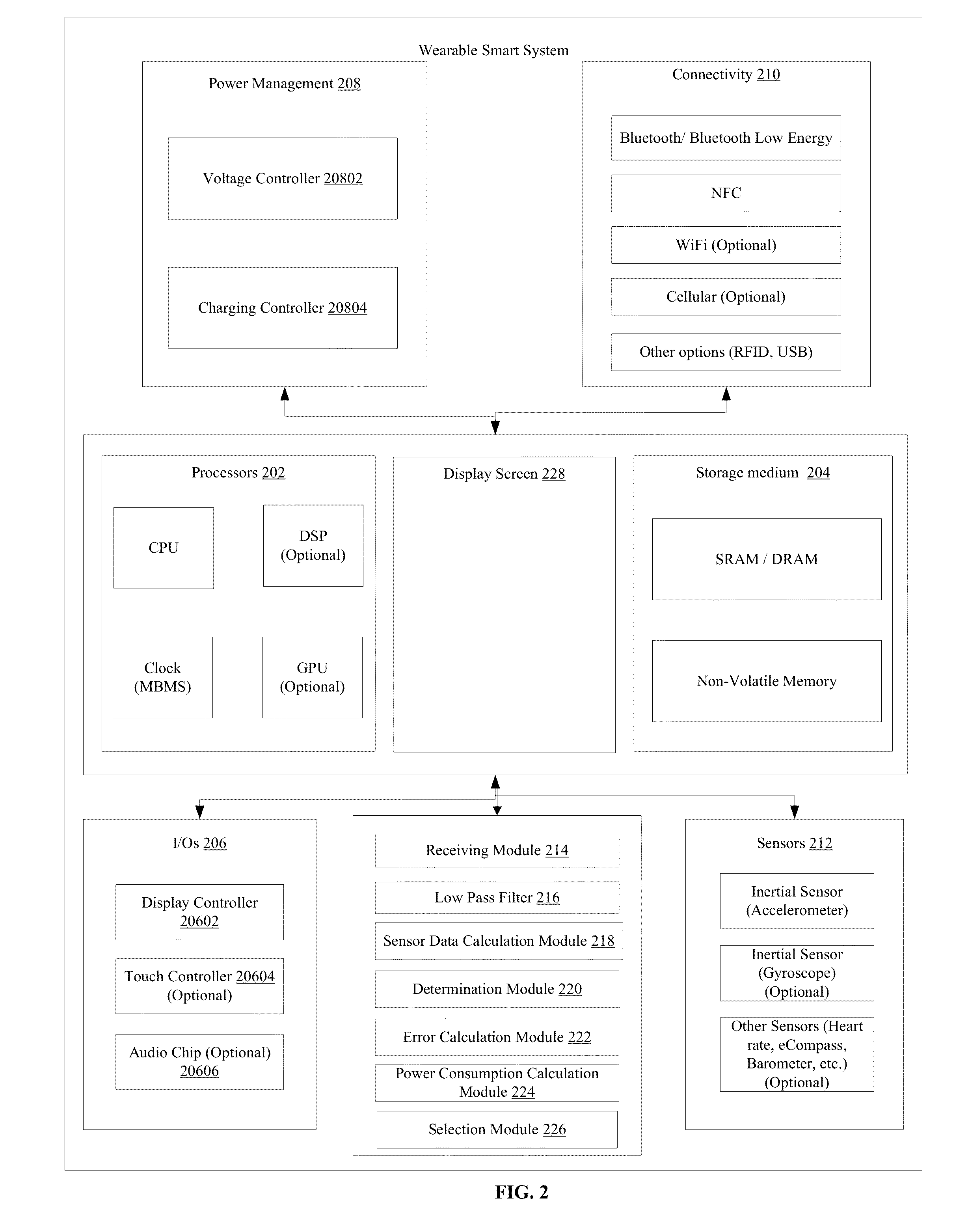Wearable system and method for balancing recognition accuracy and power consumption
a wearable system and recognition accuracy technology, applied in the field of computer technologies, can solve the problems of reducing the battery life of the wearable system, consuming significantly more electrical power, and not being very effective, and achieve the effect of balancing recognition accuracy and power consumption
- Summary
- Abstract
- Description
- Claims
- Application Information
AI Technical Summary
Benefits of technology
Problems solved by technology
Method used
Image
Examples
Embodiment Construction
[0017]Reference will now be made in detail to exemplary embodiments of the invention, which are illustrated in the accompanying drawings. Wherever possible, the same reference numbers will be used throughout the drawings to refer to the same or like parts.
[0018]FIG. 1 illustrates an exemplary environment 100 incorporating certain embodiments of the present invention. As shown in FIG. 1, environment 100 may include a wearable system 102, a server 106, and a network 110. Other devices may also be included.
[0019]Wearable system 102 may include any appropriate type of smart wearable system, such as a smartwatch, or a pair of smartglasses.
[0020]Further, the server 106 may include any appropriate type of server computer or a plurality of server computers for providing contents to wearable system 102. The server 106 may also facilitate communication, data storage, and data processing for wearable system 102. Wearable system 102 and server 106 may communicate with each other through one or ...
PUM
 Login to View More
Login to View More Abstract
Description
Claims
Application Information
 Login to View More
Login to View More - R&D
- Intellectual Property
- Life Sciences
- Materials
- Tech Scout
- Unparalleled Data Quality
- Higher Quality Content
- 60% Fewer Hallucinations
Browse by: Latest US Patents, China's latest patents, Technical Efficacy Thesaurus, Application Domain, Technology Topic, Popular Technical Reports.
© 2025 PatSnap. All rights reserved.Legal|Privacy policy|Modern Slavery Act Transparency Statement|Sitemap|About US| Contact US: help@patsnap.com



